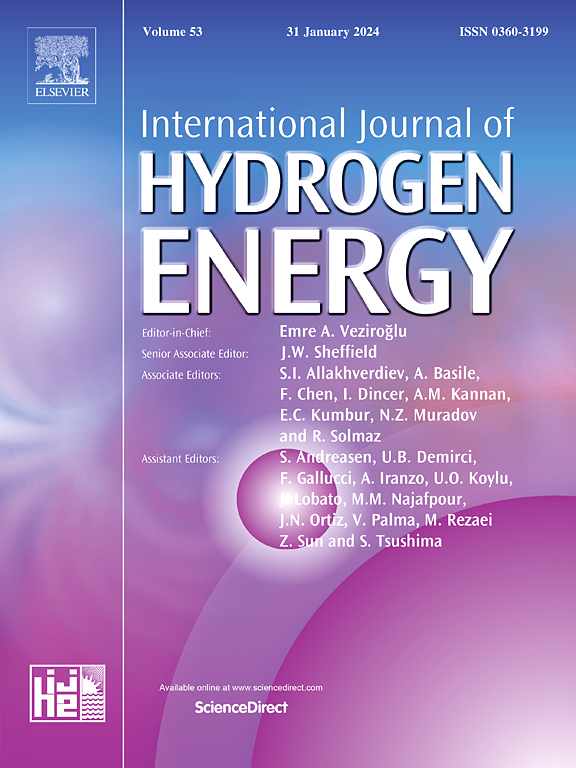Experiment and visualization of omnidirectional acoustic propagation for high-pressure hydrogen storage leakage in unconfined environments
IF 8.1
2区 工程技术
Q1 CHEMISTRY, PHYSICAL
引用次数: 0
Abstract
Hydrogen, a clean energy source, is pivotal in achieving carbon neutrality but presents safety challenges due to its high diffusivity and flammability. This study explores hydrogen leakage acoustics and spatial characteristics under high-pressure, unconfined conditions. Helium, validated as a surrogate gas with a sound pressure difference of <5 dB, was used for safe experimentation. Using Background Oriented Schlieren (BOS) imaging, significant directional and spatial dependencies were identified, with optimal detection at 1.5 m height and highest sound levels between 300° and 360°. The influence of nozzle geometry was also highlighted, with flat nozzles producing progressively higher sound pressure levels compared to circular ones. Threshold flow rates for audible detection were determined, approaching the maximum permissible leakage limit of 118 NL/min in noisy environments. These findings provide a foundation for safer and more effective hydrogen detection systems.

求助全文
约1分钟内获得全文
求助全文
来源期刊

International Journal of Hydrogen Energy
工程技术-环境科学
CiteScore
13.50
自引率
25.00%
发文量
3502
审稿时长
60 days
期刊介绍:
The objective of the International Journal of Hydrogen Energy is to facilitate the exchange of new ideas, technological advancements, and research findings in the field of Hydrogen Energy among scientists and engineers worldwide. This journal showcases original research, both analytical and experimental, covering various aspects of Hydrogen Energy. These include production, storage, transmission, utilization, enabling technologies, environmental impact, economic considerations, and global perspectives on hydrogen and its carriers such as NH3, CH4, alcohols, etc.
The utilization aspect encompasses various methods such as thermochemical (combustion), photochemical, electrochemical (fuel cells), and nuclear conversion of hydrogen, hydrogen isotopes, and hydrogen carriers into thermal, mechanical, and electrical energies. The applications of these energies can be found in transportation (including aerospace), industrial, commercial, and residential sectors.
 求助内容:
求助内容: 应助结果提醒方式:
应助结果提醒方式:


